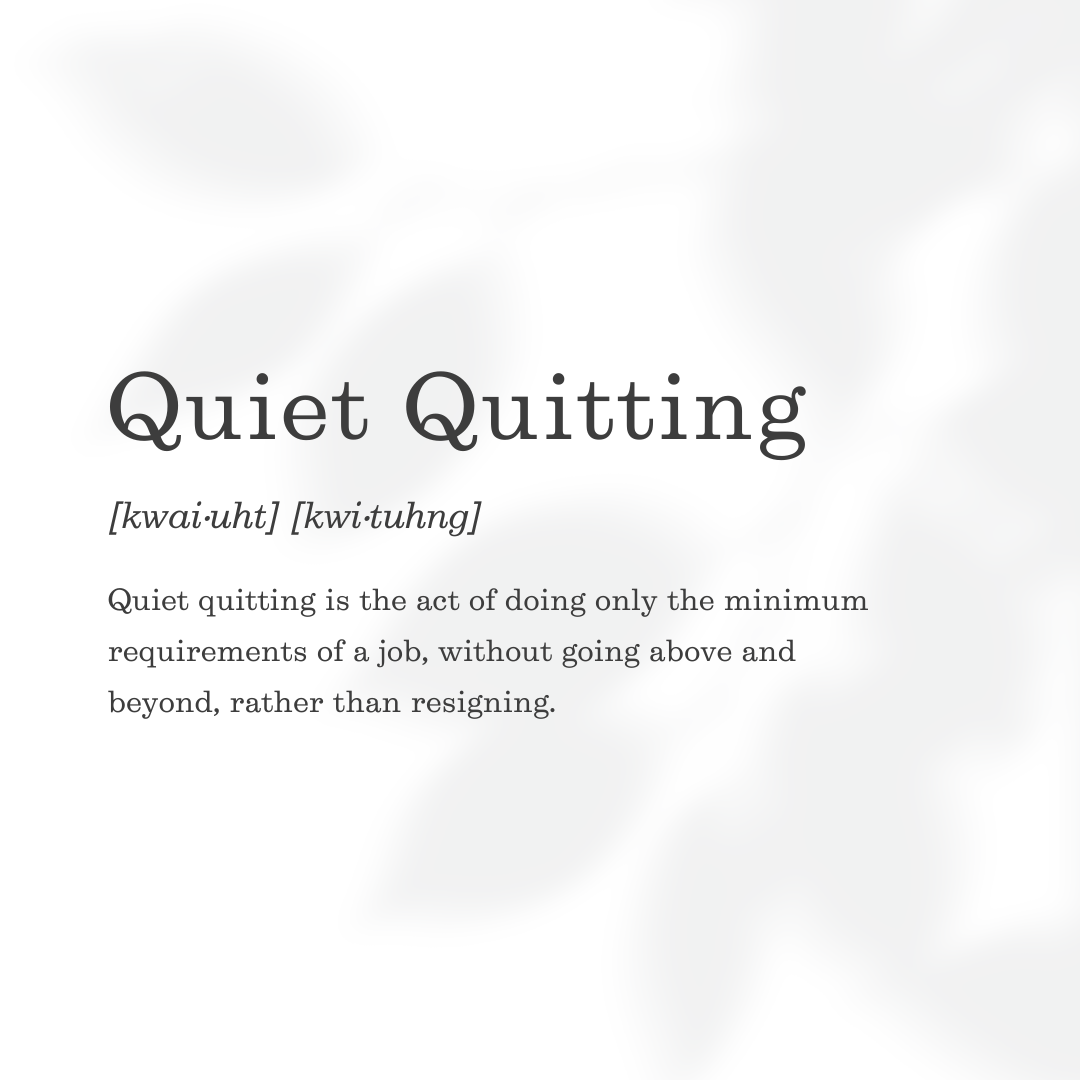
In the past few years, one phrase has captured global workplace conversations: quiet quitting. Despite the dramatic name, it does not mean that employees are secretly preparing resignation letters or ghosting their jobs. Instead, it refers to a subtle shift in how employees engage with work. They do only what their job requires and set clear boundaries between work and personal life.
For HR leaders and managers, understanding quiet quitting is not just about keeping up with trends. It’s about recognizing deeper workplace challenges that may impact engagement, productivity, and retention.
What is Quiet Quitting?
Quiet quitting is the practice of employees stepping back from going “above and beyond” at work. Instead of working late, volunteering for extra projects, or stretching beyond their job descriptions, they choose to focus strictly on their assigned duties.
This phenomenon rose to prominence during the pandemic era, when workers across industries began re-evaluating their priorities. Many employees questioned hustle culture, work-life balance, and whether sacrificing personal well-being for career growth was worth it.
While some employers interpret quiet quitting as laziness or disengagement, the reality is more nuanced. In many cases, it’s a form of self-preservation where employees are protecting themselves from burnout.
Why Are Employees Quiet Quitting?
HR professionals must look at quiet quitting as a symptom, not the problem itself. Several underlying issues drive this behavior:
1. Burnout and Overwork
The pressure to consistently overdeliver, especially in lean teams, has left many employees exhausted. When energy and motivation drain, people pull back to survive.
2. Lack of Recognition
Employees who feel their extra efforts go unnoticed or unrewarded may stop trying. Recognition is one of the simplest yet most overlooked retention strategies.
3. Poor Management Practices
A difficult or disengaged manager often drives employees to detach. According to Gallup, 70% of the variance in team engagement is tied to managers.
4. Unclear Career Growth
If workers cannot see a path for development, they may stop investing extra effort. Quiet quitting often signals a gap between employees’ ambitions and organizational opportunities.
5. Changing Attitudes Toward Work
The pandemic shifted how people view work. Many are no longer willing to define their entire identity by their jobs. Instead, they prioritize family, health, and personal fulfillment.
Why Should HR Care About Quiet Quitting?
At first glance, quiet quitting may not seem like a major issue. After all, employees are still performing their job descriptions. However, the long-term risks are significant.
-
Lower Productivity: Teams lose momentum when fewer people step forward for stretch assignments.
-
Cultural Erosion: A “just doing the minimum” mindset can spread, weakening collaboration and innovation.
-
Retention Risks: Quiet quitting can be the first step toward actual quitting. Disengaged employees are more likely to leave when new opportunities arise.
-
Leadership Challenges: Managers who fail to address disengagement may struggle to build trust and motivate teams.
For HR, the rise of quiet quitting is a signal to re-examine policies, leadership development, and employee experience strategies.
How HR Can Address Quiet Quitting
Quiet quitting is not solved by demanding more from employees or labeling them as uncommitted. Instead, HR leaders should focus on creating a healthy, motivating workplace. Here are a few strategies:
1. Promote Work-Life Balance
Encourage realistic workloads and discourage a culture of glorifying overwork. Flexible schedules, remote work options, and mental health support can go a long way.
2. Recognize and Reward Effort
Regular appreciation, from a simple thank-you to formal reward programs, boosts morale. Recognition should be fair, timely, and meaningful.
3. Train Managers in Empathy and Communication
A strong relationship with a direct manager is one of the most powerful engagement drivers. Equip managers to listen, give feedback, and support team members.
4. Offer Career Development Opportunities
Employees thrive when they see growth potential. Provide clear career paths, mentorship programs, and upskilling initiatives.
5. Encourage Open Dialogue
Create a culture where employees feel safe to express concerns. Town halls, surveys, and one-on-one check-ins help surface issues before they escalate.
6. Align Purpose with Work
Employees who feel connected to an organization’s mission are more likely to stay engaged. HR can highlight how individual roles contribute to larger goals.
Turning Quiet Quitting into an Opportunity
Instead of viewing quiet quitting as a threat, HR leaders can treat it as an opportunity to reset workplace culture. Employees are telling organizations what they need: balance, recognition, growth, and respect.
By listening and responding, companies can foster stronger employee loyalty, reduce turnover, and build workplaces where people want to give their best. Not because they are forced to, but because they are motivated and valued.
Final Thoughts
Quiet quitting may sound like a buzzword, but it reflects real issues in the modern workplace. For HR leaders, the key is not to punish or criticize employees who are setting boundaries. Instead, it’s to create an environment where employees don’t feel the need to disengage in the first place.
After all, when employees are supported, recognized, and given room to grow, they won’t just avoid quiet quitting. They’ll actively thrive.